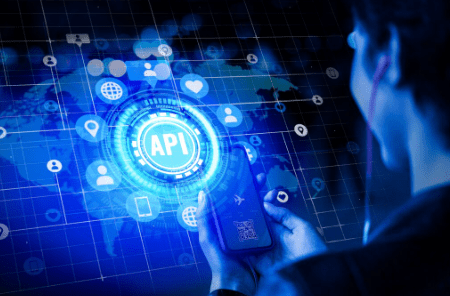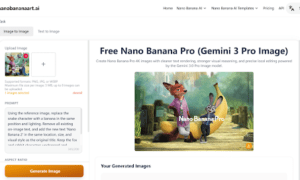Building a cross-chain dApp shouldn’t require a PhD in bridge architecture. But right now, that’s basically what it takes. You need to integrate multiple bridge APIs, handle different confirmation times across networks, manage state synchronization, build retry logic for failed transactions, and somehow keep track of user balances scattered across a dozen chains.
Most teams either give up and stick to single-chain deployment or burn months of dev time building custom infrastructure that barely works. Mono Protocol changes this completely by giving developers blockchain developer tools that make cross-chain app development feel like building for a single network.
The Cross-Chain Development Nightmare
Let’s be honest about what building multi-chain apps actually looks like today.
You start with bridge integrations. Each bridge has its own API, its own quirks, and its own failure modes. LayerZero works differently from Axelar, which works differently from Wormhole. You’re not building a product – you’re maintaining a zoo of third-party dependencies.
Then there’s balance management. A user has USDC on five different chains, but your app can’t see that as one unified balance. You need to query each chain separately, handle RPC failures, aggregate the results, and hope nothing changed while you were fetching data.
State synchronization becomes a nightmare when transactions take different amounts of time on different chains. Your frontend needs complex loading states, error handling for partial failures, and some way to communicate to users why their transaction is stuck.
And MEV protection? Good luck. Your users are getting frontrun on cross-chain swaps, and there’s not much you can do about it without building your own solver network.
This is why most dApps stay single-chain. The complexity isn’t worth it.
What Chain Abstraction Means for Developers
Chain abstraction isn’t about hiding chains from developers. It’s about removing the coordination burden so you can focus on product instead of plumbing.
With Mono’s Web3 SDK, you get unified access to user balances across all chains through a single API call. No more querying each network individually. No more aggregating responses. Just one clean interface that returns exactly what you need.
Transaction execution becomes deterministic. You submit a transaction with specific parameters, and Mono’s solver network guarantees execution at those parameters. No reverts, no failed transactions, no surprise gas spikes. If a solver commits, they deliver – backed by cryptoeconomic guarantees.
MEV protection is built in by default. Your users’ transactions never hit the public mempool where they can be frontrun. Resource Locks ensure execution happens at the agreed price without slippage manipulation or sandwich attacks.
The Mono Protocol API in Practice
Here’s what changes when you build cross-chain dapps with Mono.
- Unified balance queries: One API call returns a user’s total balance per token across all chains. Your app displays a single USDC number, and users can spend it anywhere without thinking about which chain it’s technically on.
- Simplified transaction flow: You don’t manage bridge transactions anymore. Send a transaction request to Mono, specify the target chain and token, and solvers handle the routing. Your app gets a clean success or failure response – no ambiguous pending states.
- Instant execution feedback: Traditional cross-chain transactions leave users staring at loading screens for minutes. With Mono’s liquidity locks, execution happens in seconds. Solvers provide instant liquidity backed by collateral, so users see results immediately.
- Gas abstraction: Users can pay fees in any token through Mono’s universal gas system. You don’t need to build custom paymaster logic or maintain gas token balances for users. It just works.
Real Advantages for Your Product
Speed matters for user retention. Mono delivers transactions up to 40% faster than legacy cross-chain routes. Users don’t abandon your app waiting for bridges to confirm.
Reliability matters for trust. Guaranteed execution means no failed transactions and no frustrated users wondering why their funds disappeared into a bridge. Every committed transaction completes successfully.
Cost matters for competitiveness. Lower fees from eliminating MEV and optimizing routing means more value reaches your users. No hidden costs from frontrunning or value extraction.
Architecture That Makes Sense
Mono’s account architecture is designed around unified state management. Instead of tracking fragmented balances across chains, you work with coherent per-token balances that update in real-time.
Resource Locks provide execution guarantees without requiring trust. Solvers lock collateral upfront, creating cryptoeconomic certainty that transactions will complete as specified. Your app doesn’t need complex error handling for execution failures because they can’t happen.
The solver network creates competitive execution markets. Multiple solvers compete to fulfill transactions, which drives down costs and improves speed. You get better performance without doing anything – market forces handle optimization automatically.
Monetization Built Into the Stack
Integrating Mono doesn’t just improve your product – it creates revenue opportunities. Protocols that route transactions through Mono’s infrastructure earn fee share from network activity.
Early integrators benefit most. As transaction volume grows through your protocol’s Mono integration, your revenue grows with it. It’s sustainable monetization that scales with adoption rather than requiring constant user acquisition.
This aligns incentives properly. You’re motivated to provide great UX because it drives volume. Users benefit from better cross-chain experiences. And the network benefits from increased liquidity and activity.
What You Can Build
With Mono handling cross-chain complexity, you can focus on product innovation.
- Cross-chain DEX aggregators that access liquidity across all networks without custom bridge integrations.
- Unified portfolio managers showing real-time balances and enabling one-click rebalancing across chains.
- Gaming applications where in-game assets move seamlessly between different blockchain environments.
- DeFi strategies that optimize yield across multiple chains without users manually bridging assets.
The constraints that limited cross-chain app development are gone. If you can imagine it, you can build it.
The Developer Experience You Deserve
Building multi-chain apps should be easier, not harder, than building single-chain apps. Mono Protocol’s API makes that possible by abstracting away the complexity that has nothing to do with your actual product.
You get unified balance queries, guaranteed execution, MEV protection, and instant settlement – all through a clean Web3 SDK that doesn’t require rearchitecting your entire application.
This is how cross-chain app development should work: infrastructure that disappears so your product can shine.



































